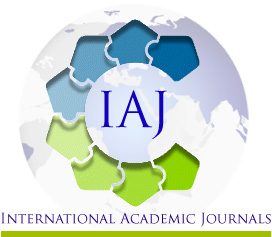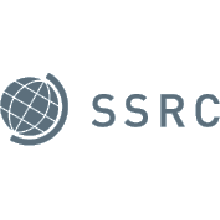MOBILE BANKING SERVICES AND PROFITABILITY OF DEPOSIT TAKING SACCOS IN VIHIGA COUNTY, KENYA
MOBILE BANKING SERVICES AND PROFITABILITY OF DEPOSIT TAKING SACCOS IN VIHIGA COUNTY, KENYA
John Aguka Ayugu - Masters Student, Kenyatta University, Kenya
Dr. Vincent Shiundu Mutswenje - Department of Accounting and Finance, Kenyatta University, Kenya
ABSTRACT
Sacco’s across the world contribute the development an economy. This is achieved by financial performance that is measured using profitability that serves a critical role in the financial markets and in general the entire economy. Nevertheless, their contributions may be hindered by issues related to financial viability. According to the 2022 CBK report, the SACCOs in Vihiga County had a varied performance in the period ending on December 31, 2021. As of December 31, 2021, the Sacco's recorded a pre-tax loss of Ksh.339million, which is a decrease from the loss of Ksh.1.4billion reported on December 31, 2020, and a significant decline from the profit of Ksh.118 million in 2019. The performance of this investment resulted in a 5% return on assets in 2017, followed by a -2% return in 2018, a -4.1% return in 2019, a -5.3% return in 2021, and a -0.6.9% return in 2022. Hence, this research aimed to ascertain the impact of mobile banking services on the profitability of SACCOS in Vihiga County, Kenya. The primary goals are to determine the impact of mobile money transfer, mobile account management, mobile credit facilitation, and mobile bill presentment on the profitability of SACCOs in Vihiga County. The research was informed by the intermediation theory, diffusion of innovation theory, theory of technological acceptability model, and the task technology fit theory. A descriptive research approach was utilized. The intended demographic for this project consisted of 125 individuals who were part of the 12 officially recognized SACCOS in the County. The research used a stratified sampling approach to determine a sample size of 95 individuals. These individuals were selected utilizing simple random selection from each stratum. The researcher gathered primary data via the use of semi-administered questionnaires that included both open-ended and closed-ended questions. The analysis employed descriptive statistics such as standard deviation, means, frequencies, and percentages. Conversely, inferential statistics was employed to determine the correlation between the variables being studied. The multiple regression analysis model was utilized. Multicollinearity, normality and heteroscedasticity were tested to test for the violation of regression equation. Frequency tables were utilized in quantitative data presentation. The ethical consideration was adhered to throughout the study period. The study showed that mobile money transfer, mobile account management and mobile bill presentment, all had the significance threshold of p<0.05 hence all had statistically significant effect on profitability of DTS in Vihiga County, Kenya. On the other hand mobile credit facilitation was statistically insignificant with p>0.05 The study concluded that popular of the responders established to abundant magnitude with the fact that mobile money transfer, mobile account management and mobile bill presentment indeed affected the profitability of DTS. The study recommended the effective utilization of bank to mobile transfer, bank to bank transfer and mobile to mobile transfer to help improve the profitability of DTS. It equally recommends the effective utilization of mobile account statements, transaction authorization and balance inquiries that would help to improve on the profitability of DTS. Additionally, it recommends for the effective utilization of utility bills management, till number payments and paybill payments that contribute to improved performance of DTS.









